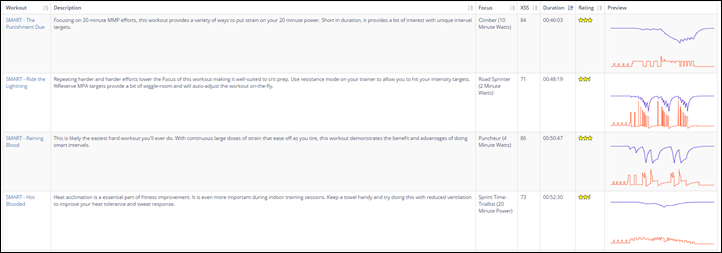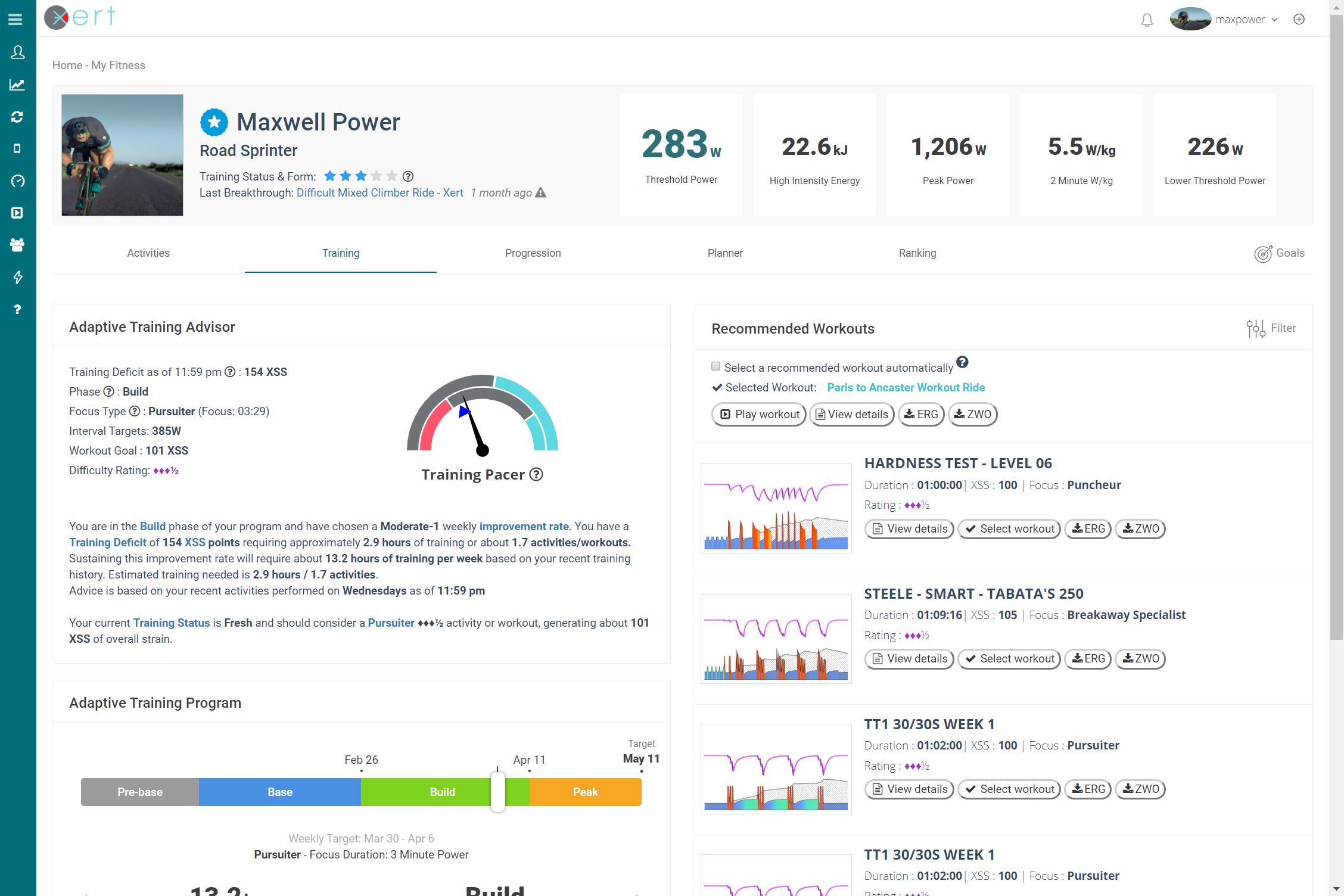

I know that run workout support is coming but that makes me hesitant to use a platform which can't account for my run and bike workouts correctly. That means your fatigue level based on the algorithm can't possibly be correct. One thing I noticed right away is that your run workouts show up as bike workouts but more concerning is the fact that there is no XSS (the Xert equivalent of TSS). I have just started using Xert (the trial). it takes into account the date and the improvement rate you want to set, ignoring the event type (ironman, 70.3, crit, short sprint, climbing race, etc.).

I agree with your feedback but there is an important point to mention on Xert: it does not consider what type of event goal you set. Both do trainer control, and are very reliable.
#Xert vs trainerroad upgrade
Geodee wrote:The new iOS app is an upgrade from the Android app. Here is one where I felt like I underperformed, and Xert agreed (the chart shows Breakthrough but I think it's a bug with the advanced chart - should be Best Effort): Here is one where I did give everything I had (got an FTP increase in TR and a breakthrough in Xert): It can suggest if you crushed or underperformed on your ramp test: It seems to be working well.Įven if you stay primarily on TrainerRoad, here is one cool use of Xert. With Xert I just do as much as I have time for up to the suggested time/XSS, and over time I have adjusted my improvement rate to match what I have been able to do. I also like Xert because with TR, Fascat, etc plans I find myself wanting the weekly time of the Advanced plan, but don't have time for the regular 2 hour rides during the week, but I can pretty much ride every day. I also like to incorporate the Interval Target power in semi-structured rides (for example, do Zwift Surrey Hills or a local 3-4 climb loop and hold the Interval Target wattage on the hills). My best use of suggested workouts is generally staying on target with regards to progression and focus while also incorporating group rides or other rides I like to do. I have used both, with some overlap, and prefer (and still use) Xert. George Dedopoulos | | | Team Atomica | Toronto Triathlon Club I’m probably missing a lot here, just a few random thoughts on this, I hope it helps. So you need to still keep your other workouts in mind when it auto selects workouts. You can set up a separate account to do running (with a running power meter), but it operates completely separately. The only issue as a triathlete is it is a cycling-focused app. If I miss a workout or move it to another day, it adapts, and changes the suggestion based on the new circumstances.

I just set aside time for a workout, let it pick one and go. It has taken me a long time to fully trust the algorithm—I’ve always used TP (and GC), a coach and my own intuition to back up what the platform recommends—but now I almost completely let it dictate my workouts. Similarly to how you don’t need structured FTP tests, you don’t need a structured workout plan. No structured FTP tests are a huge benefit (a hard group Ride is usually enough). Either one interfaces with the remote player, so you can view your progress/stats on a large screen.Īs far as the entire platform, I’ve been using it a few years now, and I believe it has helped me a become a much stronger cyclist (and runner, to a lesser extent). I call the iOS an upgrade because it’s newer, and I value reliability and design more than configurability. native ANT+ support in devices that have it, and compatibility with ANT+ dongle)), and the iOS app is rock solid, simple, cleaner, and hides away much of the extraneous data. The main differences are the Android app gives more detail/configurability (connection stats, configurability of data fields, wider support for devices (i.e. The new iOS app is an upgrade from the Android app.


 0 kommentar(er)
0 kommentar(er)
